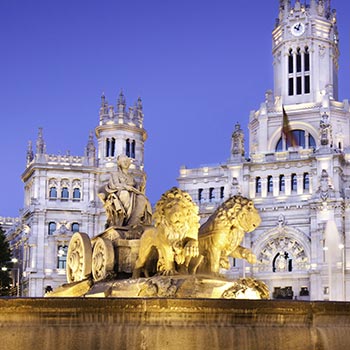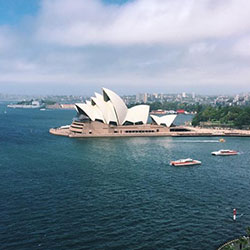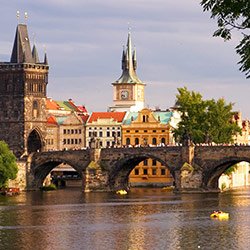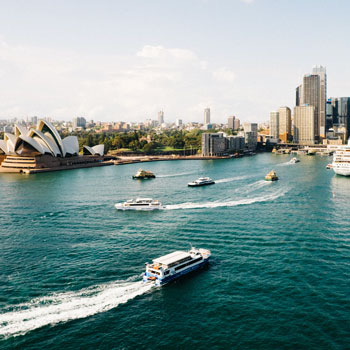International Journalism II: Key International Organizations
Engineering & Social Sciences Program
Madrid, Spain
Dates: 1/19/23 - 6/3/23

International Journalism II: Key International Organizations
OVERVIEW
CEA CAPA Partner Institution: Universidad Carlos III de Madrid
Location: Madrid, Spain
Primary Subject Area: Journalism
Instruction in: English
Course Code: 13285
Transcript Source: Partner Institution
Course Details: Level 300
Recommended Semester Credits: 3
Contact Hours: 42
DESCRIPTION
Is divided in two parts. The first one is an analysis of the major International organisations in International society. For this purpose we start from the analysis of the formation and transformation of International society. Subsequently we analyzed the characteristic of International society, its subjects and actors and -International law. Some topics are devoted to the análysis of Media in International society. Second part is an análysis of the evolution, functions and major International organisations, universals and regionals. Following a review of its origins is discussed a functional análysis and of every agencies and IO.
PART. I. INTERNATIONAL SOCIETY AND INTERNATIONAL ORGANIZATIONS
Unit 1: Formation of the international society
1. Notion of international society
2. Main historic stages of international society
3. Universalization of international relations
4. Transition from the classic international society to the contemporary one and emergence of first world Organizations
Unit 2: Transformations of international society
1. Crisis and a New World Order
2. Factors of change in International Society
3. The Media Factor
4. Globalization and World Organizations
Unit 3: Essential features of the International Society
1. Introduction of essential features of the international society
2. Structure and main approaches to the international society
3. Governance in a universal, globalized and decentralized society
4. A heterogeneous international society: economic, cultural and power perspectives
Unit 4: Subjects and actors in international relations, with special reference to world Organizations
1. Concept of subjects and actors. The modern State
2. Individuals. Peoples. Minorities. International civil society. Other entities
3. Concept, types and features of international organizations. Law and power in IO
4. Creation, modification and succession of international organizations (IO)
5. Manifestations of IOsinternational legal personality. Legal regime of IO
6. Organic structure and procedures of decision-making
Unit 5: Media and international society
1. The international media regime
2. Freedom of opinion and expression
3. The Media and minority rights
4. Media and international conflicts
Unit 6: International law as an instrument for cooperation in international society
1. Fundamental principles of law, peremptory norms (ius cogens) and erga omnes obligations
2. International norms. Customary Law and treaties. Unilateral acts. Resolutions of IO. Others
3. Functions of International law in International Society. Application of International law
4. International Law-making by IOs and its application
PART II. EVOLUTION, FONCTIONS AND MAINS INTERNATIONAL ORGANIZATIONS
Unit 7: Historical antecedents and evolution of International Organizations
1. Historical antecedents
2. First International organizations
3. The League of Nations: main features and achievements
4. The United Nations: main features and achievements
5. Proliferation of International organizations
6. IO and the fundamental principles of contemporary International law (sovereignty, equality, non-intervention, cooperation¿)
Unit 8: Most important functions of IO (I): the maintenance of international peace and security
1. The Peaceful Settlement of Disputes
2. The Prohibition of use of force
3. System of Collective Security
4. Peacekeeping
5. International Humanitarian Law
Unit 9: Most important functions of IO (II): protection of human rights and sustainable development
1. Protection of human rights: Evolution and general aspects
2. Protection of human rights within the UN framework
3. Protection of human rights within the European and American frameworks
4. Sustainable development: general aspects
5. The Agenda 2030 and other challenges faced by the international community
Unit 10: The United Nations
1. Creation, purposes and principles
2. Structure. Reform of the United Nations Charter
3. Specialized Agencies of the UN: Introduction
4. Main
PART. I. INTERNATIONAL SOCIETY AND INTERNATIONAL ORGANIZATIONS
Unit 1: Formation of the international society
1. Notion of international society
2. Main historic stages of international society
3. Universalization of international relations
4. Transition from the classic international society to the contemporary one and emergence of first world Organizations
Unit 2: Transformations of international society
1. Crisis and a New World Order
2. Factors of change in International Society
3. The Media Factor
4. Globalization and World Organizations
Unit 3: Essential features of the International Society
1. Introduction of essential features of the international society
2. Structure and main approaches to the international society
3. Governance in a universal, globalized and decentralized society
4. A heterogeneous international society: economic, cultural and power perspectives
Unit 4: Subjects and actors in international relations, with special reference to world Organizations
1. Concept of subjects and actors. The modern State
2. Individuals. Peoples. Minorities. International civil society. Other entities
3. Concept, types and features of international organizations. Law and power in IO
4. Creation, modification and succession of international organizations (IO)
5. Manifestations of IOsinternational legal personality. Legal regime of IO
6. Organic structure and procedures of decision-making
Unit 5: Media and international society
1. The international media regime
2. Freedom of opinion and expression
3. The Media and minority rights
4. Media and international conflicts
Unit 6: International law as an instrument for cooperation in international society
1. Fundamental principles of law, peremptory norms (ius cogens) and erga omnes obligations
2. International norms. Customary Law and treaties. Unilateral acts. Resolutions of IO. Others
3. Functions of International law in International Society. Application of International law
4. International Law-making by IOs and its application
PART II. EVOLUTION, FONCTIONS AND MAINS INTERNATIONAL ORGANIZATIONS
Unit 7: Historical antecedents and evolution of International Organizations
1. Historical antecedents
2. First International organizations
3. The League of Nations: main features and achievements
4. The United Nations: main features and achievements
5. Proliferation of International organizations
6. IO and the fundamental principles of contemporary International law (sovereignty, equality, non-intervention, cooperation¿)
Unit 8: Most important functions of IO (I): the maintenance of international peace and security
1. The Peaceful Settlement of Disputes
2. The Prohibition of use of force
3. System of Collective Security
4. Peacekeeping
5. International Humanitarian Law
Unit 9: Most important functions of IO (II): protection of human rights and sustainable development
1. Protection of human rights: Evolution and general aspects
2. Protection of human rights within the UN framework
3. Protection of human rights within the European and American frameworks
4. Sustainable development: general aspects
5. The Agenda 2030 and other challenges faced by the international community
Unit 10: The United Nations
1. Creation, purposes and principles
2. Structure. Reform of the United Nations Charter
3. Specialized Agencies of the UN: Introduction
4. Main







